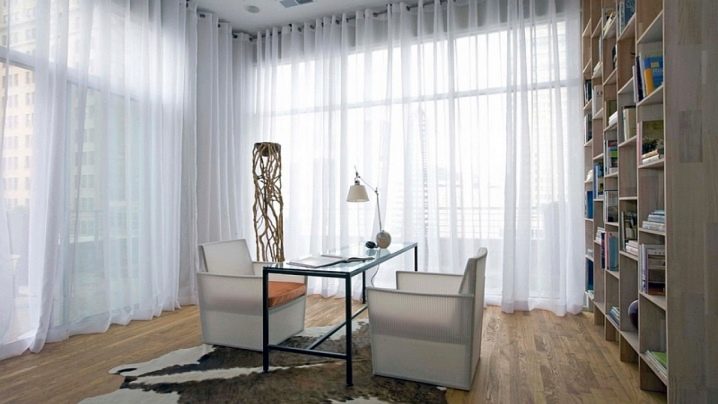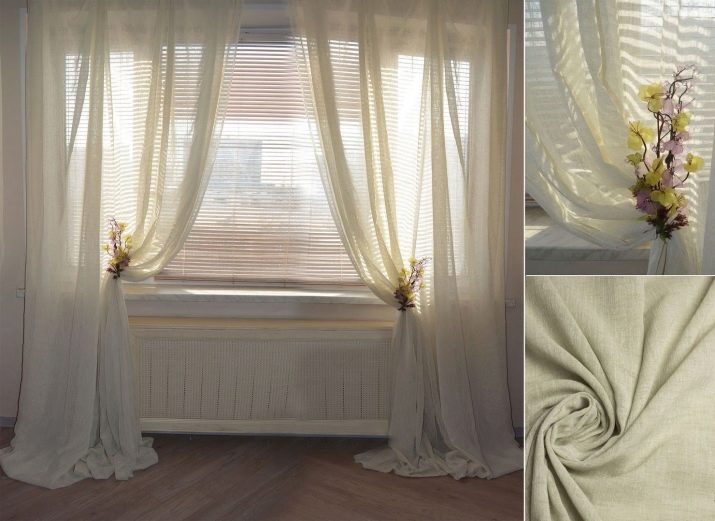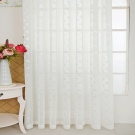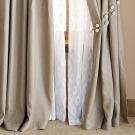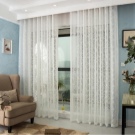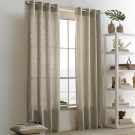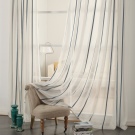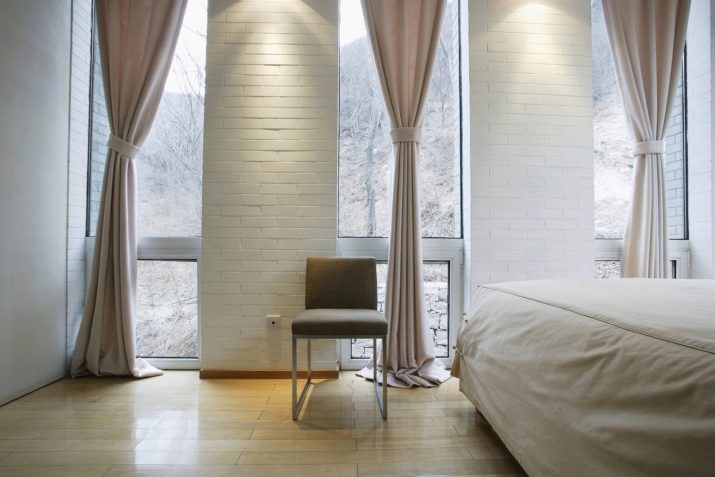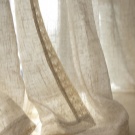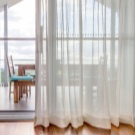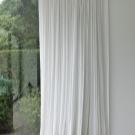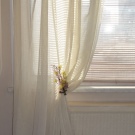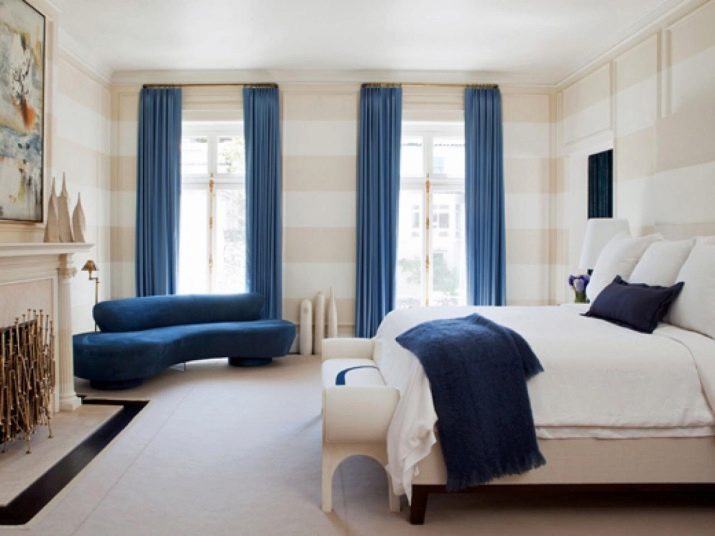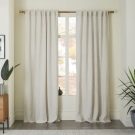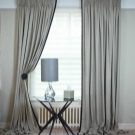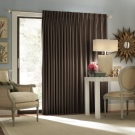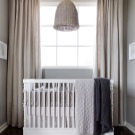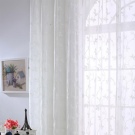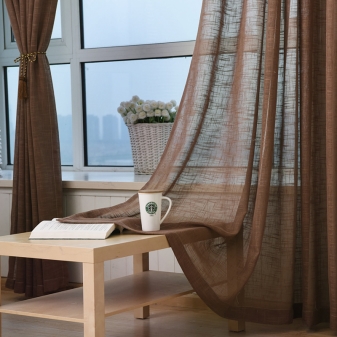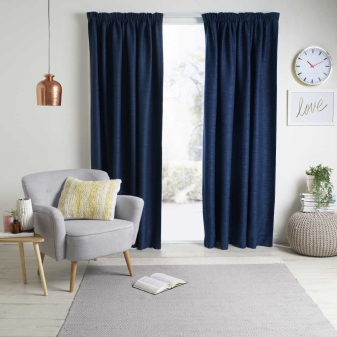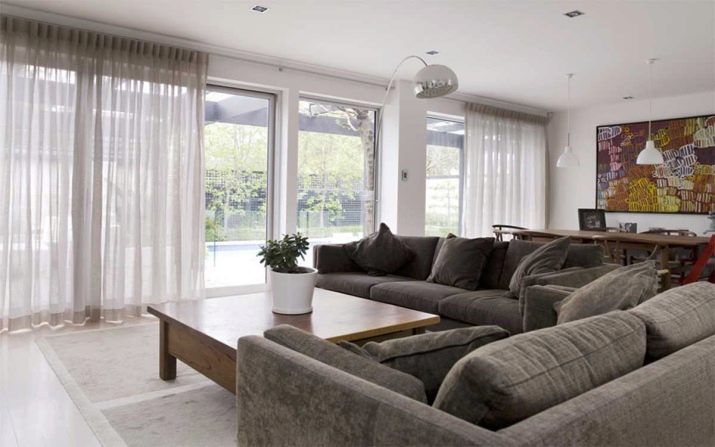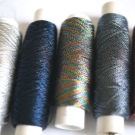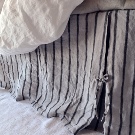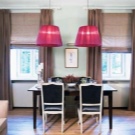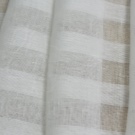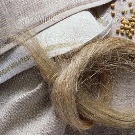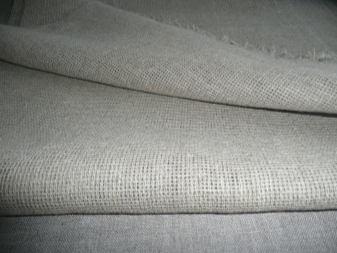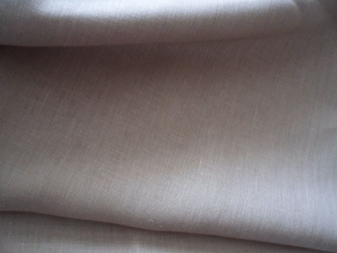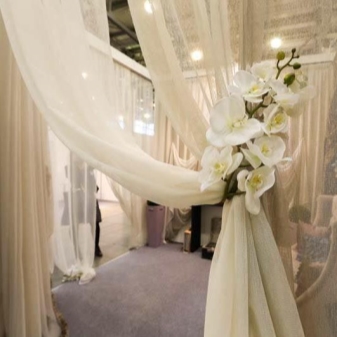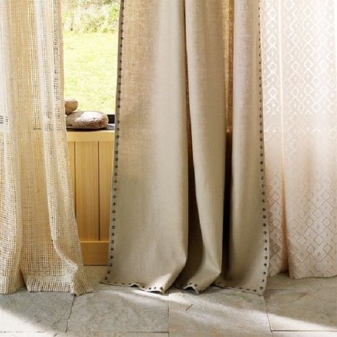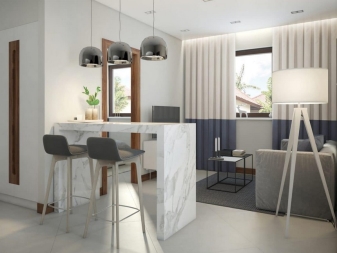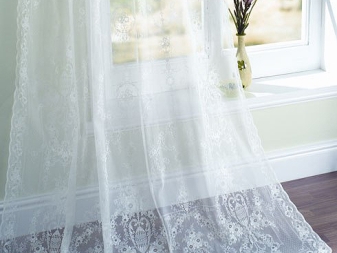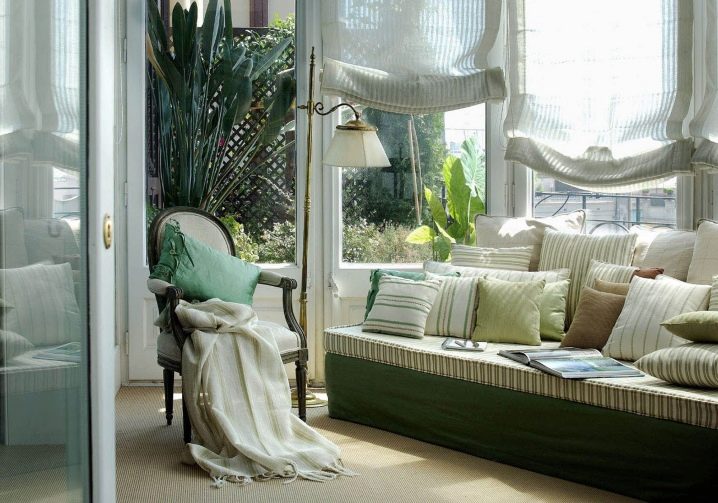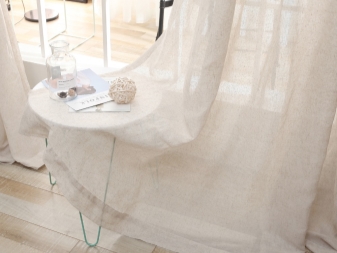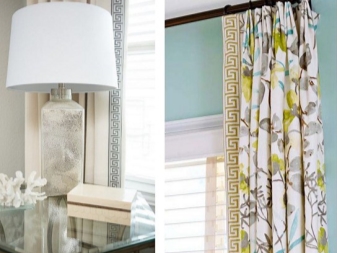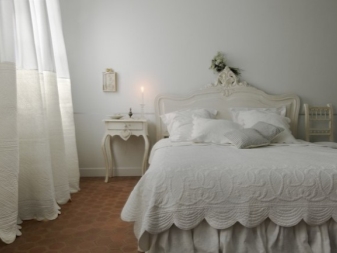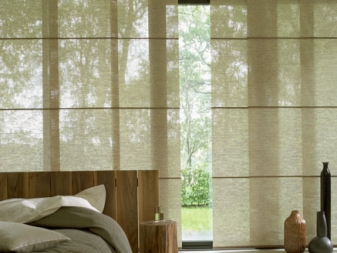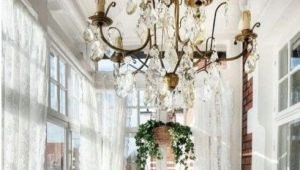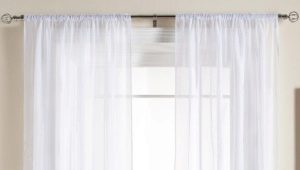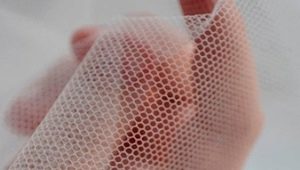Linen Tulle
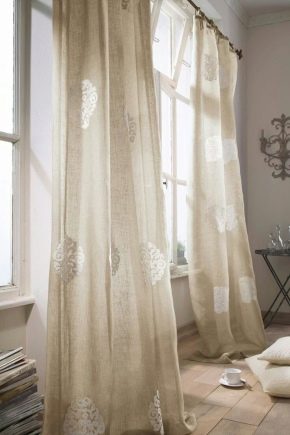
Flax began to be used by people in ancient Egypt. A cloth was weaved from it, which was very expensive, so only rich citizens bought it. Over time, other materials began to appear. Everyone liked synthetic because of its practicality, and flax was undeservedly forgotten.
Today, natural fabrics are again in trend. This is understandable: more and more people want to get closer to nature, prefer environmentally friendly and hypoallergenic materials. It is these qualities that made flax popular and in demand in a modern interior. Flax tulle is also often used in today's interior.
Advantages and disadvantages
Like other natural fabrics, flax and linen tulle have several advantages:
- environmental friendliness - it is made of natural flax fibers, without synthetic impurities. However, in order to improve the appearance and performance, silk or lavsan may be included. Silk fibers make the fabric smooth and shiny, and when synthetics are added, it is less wrinkled;
- aesthetics - Flax has a natural beauty;
- antistatic - tulle is not electrified, therefore dust is not attracted to the fabric and the curtains remain clean much longer than synthetic ones;
- hypoallergenic - it does not cause an allergic reaction and is suitable for people prone to allergies;
- practicality - it is easy and convenient to care for the tulle, as it is not easily contaminated;
- strength - it is extremely durable, can preserve the beauty for many years;
- natural air conditioning - the curtains are like an air conditioner, in winter time they will warm the room, and in hot weather they will create coolness, therefore linen tulle is very good as summer curtains;
- healing properties - Flax fibers have bactericidal characteristics, they create a favorable microclimate in the kitchen, children's room, bedroom, and also remove harmful radiation from electrical appliances.
- aeration - air is easily passed without creating a greenhouse effect;
- versatility - a variety of colors and textures involves the use of different styles.
There are some drawbacks to consider when choosing flax tulle:
- flax quickly crushed, at the same time it is badly ironed, therefore to make curtains more presentable, it is better to use a steamer;
- fabric during washing shrinks up to 7%. This can happen even after the second wash. Therefore, when buying, you need to take into account this feature and calculate everything in advance. If you will sew the curtains yourself, before you begin cutting, the material should be soaked.
Variety of options
Linen tulle curtains are very diverse, they differ in different criteria.
Color palette:
- Unbleached flax is an imitation of homespun cloth that has gray-brown or dark gray shades. Weaving clearly expressed. Despite the specific look, this fabric is very much loved by designers, they use it in the design of interiors of apartments and houses in the style of Country, Eco, Scandinavian and Minimalism. Not quite appropriate in the baroque and classical interiors.
- Clarified products are lighter, but far from white. They come in various natural shades: yellowish, light gray, ivory, baked milk, cream. These and many other natural shades look very nice and tender in the interior of different styles.The most popular shade of flax tulle is a light yellow fabric.
- Linen fabrics can be painted in any color. For example, blue tulle is appropriate in the Scandinavian interior, azure-colored curtains will decorate the Mediterranean interior, I’ll distinguish African tones in orange tones.
Density:
- lungs - Linen fabric has a surface that is characterized by a smooth structure. It is translucent, light passes perfectly through it, and is often used as a tulle curtain. Flax mesh is the lightest fabric, can be used for the decoration of the nautical style;
- dense - curtains with relief structure, used in night curtains.
Composition:
- pure linen - environmentally friendly, characterized by strong crushing;
- with additives - lavsan (synthetics) makes the fabric less creased, natural silk adds smoothness and shine;
- with metallic thread - silver thread gives a feeling of purity, gold - add luxury;
- linen tulle - vertical stripes will visually increase the height, horizontal strip will expand the space of the room.
Texture:
- smooth - a thin canvas with a smooth texture;
- textured - high density, interlacing of threads is pronounced, there are fabrics with a pattern.
Interior design
Linen lace curtains have high aesthetic qualities. A wide range of offers textile industry in Turkey. Turkish linen linen curtains are extremely diverse. They are very different, differ in all sorts of natural shades, different texture and relief. Tulle canvases can be smooth or decorated with merezhka, embroidery, ribbons. The decoration with a braid or lace makes the model visually lighter, giving the curtains airiness. Customer reviews mark a wide variety of ready-made kits. They can be used, for example, for a kitchen or bedroom.
Fashion trend - original embroidery on the curtain, which is a return to folk traditions. The natural palette of linen tulle is unique: soft, bedding, delicate tones are suitable for a homely interior as well as possible.
Such curtains are universal, their palette is combined with any range that is used in the design of a particular interior.
Linen tulle is suitable for any room. Curtains from it differ in simplicity and grace. They can be decorated with beads, decorative pickups made of flax or any other natural material or other decorative elements, for example, light braided cords and ribbons can be used. In the decoration of linen curtains often use loops, contrasting cornices and grommets. True, tulle is not at all combined with lambrequins, so they should be abandoned.
It is good to use flax tulle in a roller blind, it allows a steady light into the room, hiding it from prying eyes. Translucent tulle on the background of light furniture and white walls will not be lost and will look very elegant. If you still want to get away from the natural pallor of natural flax, you can add bright decorative elements, for example, it can be a bright band.
Linen fabrics with relief, often decorate the windows of the bedroom and living room. The durability of this canvas is amazing - flax tulle can preserve the natural beauty for decades, it is inherited.
A huge selection of linen curtains allows you to arrange the room in different styles.
Flax is often used in Japanese curtains: several narrow canvases, different in color, cover the window. A colored flax with plant motifs in drawings suitable for oriental and colonial interior.
Linen curtain from tulle will easily and airy look in different designs of curtains. It can be French, Austrian, English curtains, as it drapes well and creates soft folds over the entire surface or only at the bottom of these products. Combinations with other styles:
- In the Scandinavian style for kitchen curtains often use the described textiles. Distinctive features of these curtains - simplicity, light colors, eco-friendly material. Countries where sunlight is scarce often use laconic curtains that leave almost the entire window open. The correct length of the curtains should reach the window sill.
- Unbleached canvas, which usually has shades of gray to brown with a pronounced interweaving of threads is appropriate in the style of Provence. Here lace, cotton and linen will be perfectly combined, creating an original image with unique notes.
- In the antique style is appropriate combination of flax and silk, where the curtains will be decorated with Greek ornament.Silk in addition with linen tulle is also suitable for Classics and even Art Deco.
See the next video for more interesting ideas on interior design with linen tulle.
